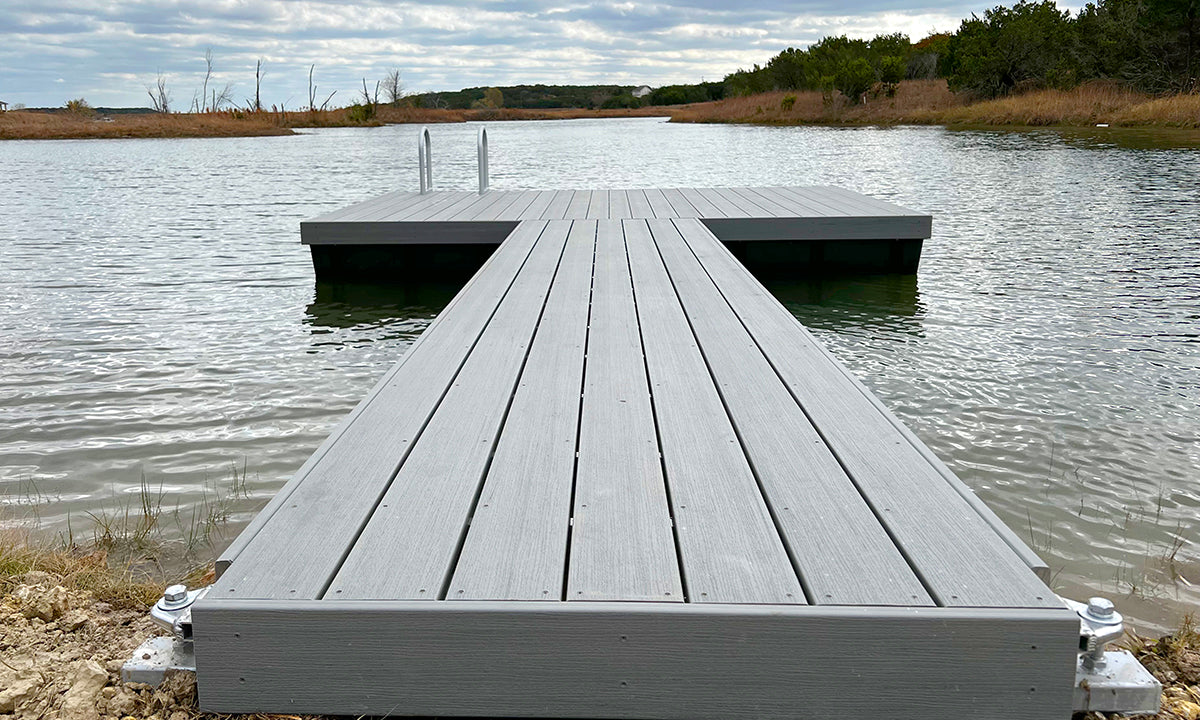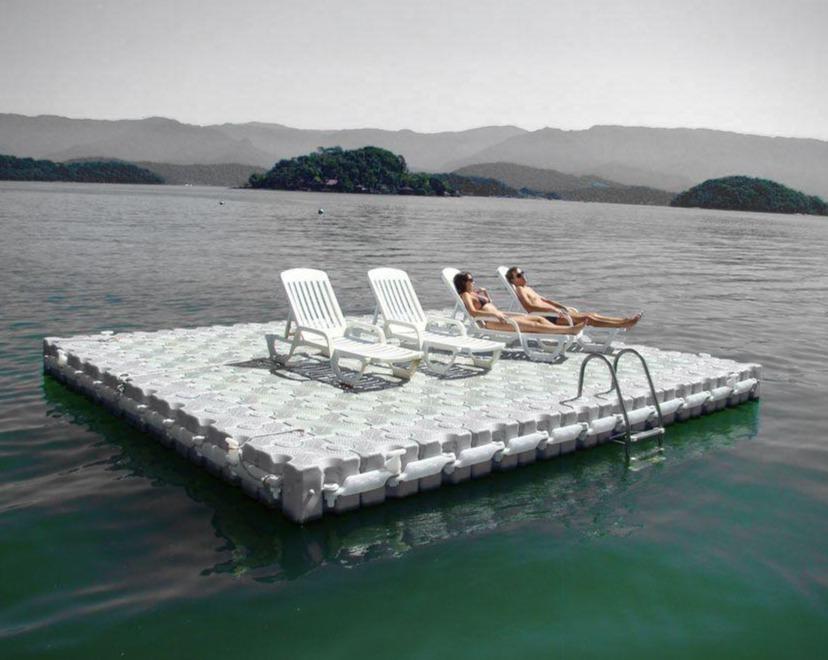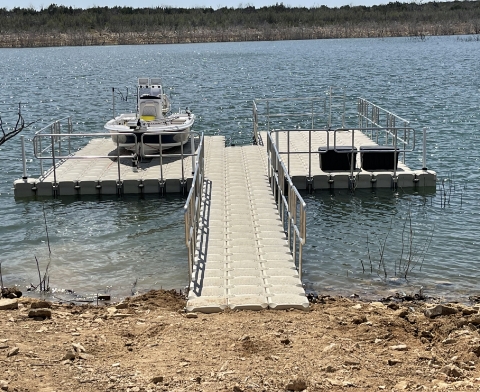Explore the Range of Floating Dock Services Designed to Suit Every Boater's Needs
Explore the Range of Floating Dock Services Designed to Suit Every Boater's Needs
Blog Article
Upgrade Your Beachfront With Resilient Floating Docks
Updating your beachfront with long lasting floating docks can substantially enhance both performance and looks, offering a functional solution for various water activities. With a variety of materials offered, including low-maintenance alternatives and traditional wood, picking the ideal dock can complement your personal design and meet functional needs.
Advantages of Floating Docks
Floating docks offer a plethora of advantages that improve their charm for different maritime applications. Unlike traditional fixed docks, floating docks surge and autumn with the tide, making sure constant availability for watercrafts and watercraft no matter of ecological problems.
In addition, floating docks are much easier to move and install, providing adaptability for seasonal or short-lived usage. Their modular design enables customization to fit particular needs, whether for personal marinas, residential beachfronts, or commercial applications.
Additionally, floating docks create very little disruption to the marine environment, maintaining regional communities and reducing the chance of disintegration. They likewise provide boosted security and security for customers, as their resilient nature uses an extra forgiving surface area than stiff structures.
Furthermore, floating docks can promote a diverse range of tasks, such as fishing, swimming, and leisure boating, making them an important asset for waterfront development. Their flexibility and functionality make floating docks a favored choice for a selection of naval jobs.
Selecting the Right Products
Picking suitable materials for floating docks is essential to their durability, efficiency, and overall efficiency. When selecting products, consider elements such as ecological direct exposure, upkeep needs, and architectural honesty. Usual products consist of wood, plastic, aluminum, and composite options, each offering unique advantages and drawbacks.
Wood, while aesthetically pleasing, requires regular upkeep to avoid rot and degeneration. Pressure-treated timber can boost resilience, but it may still catch water damage with time. Plastic drifts, often made from high-density polyethylene, are immune to corrosion and need minimal maintenance, making them an eye-catching choice for low-maintenance applications.
Light weight aluminum is an additional practical choice, understood for its toughness and lightweight homes. It is immune to corrosion and can withstand extreme climate conditions, although it may be much more expensive than various other materials. Composite products incorporate the very best features of timber and plastic, providing a low-maintenance and resilient alternative that simulates the appearance of timber without the associated disadvantages.
Eventually, the option of material ought to align with the planned usage, environmental considerations, and budget restrictions, guaranteeing a long lasting and functional floating dock that satisfies your certain requirements.
Setup Refine Overview
The successful installation of a floating dock counts on careful preparation and execution, guaranteeing that it operates effectively in its intended environment. The initial step entails assessing site conditions, including water depth, coastline attributes, and dominating weather condition patterns, which will notify the dock design and anchoring system.
Complying with the website analysis, the next phase is to prepare the floating dock parts. This includes constructing the structure, protecting drifts, and attaching any type of essential equipment. It is important to make sure that all links are water-resistant and durable to endure marine conditions.
Once the dock is constructed, the installation process begins with placing the dock in the water. This can include a crane or various other training tools, specifically for larger structures. Proper positioning is essential for functionality and safety and security.

Maintenance Tips for Durability
Regular maintenance is vital for guaranteeing the durability and optimum efficiency of a drifting dock. To attain this, begin with routine inspections at least twice a year, concentrating on the check my reference integrity of the dock's structure, consisting of the flotation tools and attaching equipment. Seek indications of wear, deterioration, or damages, and resolve any type of issues quickly to stop more damage.
Cleansing is another important facet of maintenance. Eliminate debris, algae, and barnacles from the dock's surface area to prevent unsafe problems and maintain visual appeal. Utilize a moderate detergent and a soft brush to stay clear of damaging the dock's materials.
Furthermore, make certain that the dock is effectively secured and secured to stand up to seasonal changes in water degrees and weather condition problems. Check the anchoring system for stability and make modifications as needed.
Enhancing Your Exterior Aesthetic
To produce a visually Extra resources attractive exterior space, incorporating a floating dock can considerably enhance the general visual of your waterfront residential or commercial property. Floating docks are not only useful yet can likewise act as a striking centerpiece that enhances the all-natural environments - floating dock company. Readily available in numerous products and layouts, these docks can be customized to match your residential or commercial property's building style and landscape
The addition of ornamental elements, such as incorporated lights or trendy railings, further elevates the dock's aesthetic charm. Think about making use of natural wood coatings, which blend seamlessly with the atmosphere, or going with contemporary materials like aluminum or composite outdoor decking that provide a streamlined, contemporary appearance.
Tactically putting planters or seating locations on or around the dock can develop inviting spaces that urge leisure and enjoyment of waterfront views. Furthermore, integrating colors and textures that harmonize with your landscape will certainly create a natural visual throughout your outside area.

Verdict

Upgrading your waterside with durable floating docks can significantly improve both functionality and aesthetic appeals, offering a functional remedy for various water tasks. Unlike traditional set docks, floating docks increase and loss with the trend, ensuring regular availability for watercrafts and watercraft regardless of ecological problems.Selecting suitable materials for floating docks is crucial to their durability, performance, and total performance.As soon as the dock is constructed, the setup procedure starts with placing the dock in the water.In recap, floating docks offer many benefits, including versatility to water degree adjustments and a range of product alternatives.
Report this page